Off the map. In Bucharest
25 min documentary
Ioana Marinescu & Robert Fearns
The film is a collaboration with the British
artist and film-maker Robert Fearns. It implies two perspectives: mine,
as someone who grew up in a place that was undergoing a radical transformation,
not understanding much at the time, then gradually becoming obsessed
with it.
The other, more objective and distanced, yet curious eye, is that of
the foreigner, of the outsider. He tries to understand - what is beyond
understanding.
The void refers to the demolished area of Bucharest, dictated by Ceausescu
in the 1980's, to make place for the so-called 'Civic Centre'- 'The
People's Palace' and the 'Victory of Socialism Boulevard'.
The film is based on research I have undertaken for several years on
this subject and particularly on an article written for the Catalan
magazine 'Quaderns' in July 2003 (The Puzzle) - which was the beginning
and the pretext for our collaboration.
We can perhaps categorised it 'a poetic documentary' - footage of the
present sites alternate with archival images, the narrator's voice with
those of former inhabitants of the area or passers-by, reality with
story-telling.
While Ceausescu's Palace is an obvious reality, less known and documented
are the demolished districts it replaced. One third of the old town
razed to the ground, thousands of houses and historical monuments demolished.
The whole Uranus hill flattened. Some of the most historical and picturesque
quarters of Bucharest transformed into desolate wastelands. People's
lives often shattered.
The premise was to tell the story of this part of Bucharest that gradually
falls into oblivion.
What is left when there is nothing left? Does it persist somewhere in
people's memories, in their consciousness? In archives and testimonies?
Is it important to understand? To acknowledge your past? To systematically
archive and document? What are the consequences of the lack of knowledge?
Of the lack of memory?
Trying to find our way around the area, we gradually realized how little
is known or left of this part of the city. People's memories are often
non-existent or confusing, sources of documentation are scarce. Throughout
my research I came across bureaucracy and indifference.
Those who lived in the area, the former inhabitants of the demolished
houses are the few who preserve the memory of this place. Most of these
people are old now; they had not been materially compensated for their
lost properties, neither had they a chance to tell their troubles.
Their voices weave a story that gives meaning to the erased space. They
talk about their houses, their gardens, the streets they walked on,
their neighbors, the nearby churches. About the traumatic moment of
demolition and forced removal into blocks of flats at the periphery
of the city. Slowly, you begin to understand.
The reality we are trying to re-create is between history and story-telling.
Ioana Marinescu
I remember my astonishment when Ioana Marinescu
first told me about the recent history of Bucharest. All I really knew
of it was from the dramatic TV reports at the end of the Eighties. This
burst of media interest in the 'revolution' soon faded and was replaced
by occasional reports on the poverty and social problems the nation
faced. Eventually these too were replaced by suggestions that Romania
was well on the road to recovery, becoming a venue for tourists, American
film companies and a candidate for the European Community.
But although the country appeared to be rebuilding itself as a European
nation, I still felt unsure of where I placed it. East or West? Near
or far? Old or new? Talking to Ioana I realised that the country itself
raised the same questions, especially with regard to its capital city,
where the legacy of communism was so dominant that it could not be ignored.
That a new beginning is difficult to conceive when a very different
past is so recent, yet lost forever.
It was an extreme example of an area of research I had been exploring
for some time, which was how do we perceive our own cities? To what
extent does our culture and personal history inform our understanding
of space? This raises the question of how we understand other cities,
for example as tourists in societies different to our own, and are our
possible misunderstandings any more or less relevant or true than those
of residents? When Ioana showed me a map of the enormous scale of demolition
that had taken place in Bucharest in the Eighties, and the huge numbers
of people that had been uprooted so quickly, I felt that even the notion
of 'residents' was open to question. Is a resident someone who merely
happens to live in an arbitrary place, or someone who contributes to
a developing community, where their residence is their 'home'.
Ordinarily I would be extremely wary of taking on a subject such as
Bucharest. What right would I have as an outsider, as a relatively comfortable
English film-maker, to pass comment on somewhere I admittedly know very
little about? On the other hand my approach to the city might be more
analytical than that of a resident, less involved with nostalgia and
personal history. Working in collaboration with Ioana Marinescu, who
grew up in the city, offered the possibility of exploring such a dilemma,
leading to a film which combines elements of recollection and memory
with distanced, objective observation.
The result is hopefully more than a documentary. The film does not attempt
to present a definitive truth. Rather it offers different readings of
the condition of the city 16 years after Ceausescu's downfall.
Robert Fearns
 |
|
|
||||||||||||||||||||
 |
 |
 |
|
|||||||||||||||||||
| |
|
|||||||||||||||||||||
 |
|
|
|
|||||||||||||||||||
| |
|
|||||||||||||||||||||
 |
|
|||||||||||||||||||||
 |
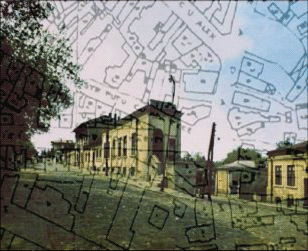 |
|
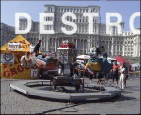 |
 |
|
|||||||||||||||||
| |
 |
 |
|
|||||||||||||||||||
| |
|
|||||||||||||||||||||
 |
|
|||||||||||||||||||||
| |
|
|
|
|||||||||||||||||||
| |
|
|
|
|
|
|||||||||||||||||
| |
|
|||||||||||||||||||||
| |
|
|||||||||||||||||||||
| |
|
|
||||||||||||||||||||
 |
|
|||||||||||||||||||||
 |
|
|||||||||||||||||||||
| |
|
|||||||||||||||||||||
| |
|
|
|
|||||||||||||||||||
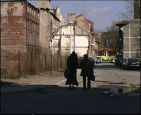 |
|
|
||||||||||||||||||||
| |
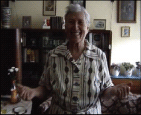 |
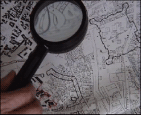 |
|
|||||||||||||||||||
| |
|
|||||||||||||||||||||
 |
|
|||||||||||||||||||||
 |
 |
|
||||||||||||||||||||
| |
|
|
|
|
|
|
|
|
|
|
|
|
|
|
|
|
|
|
|
|
|
|